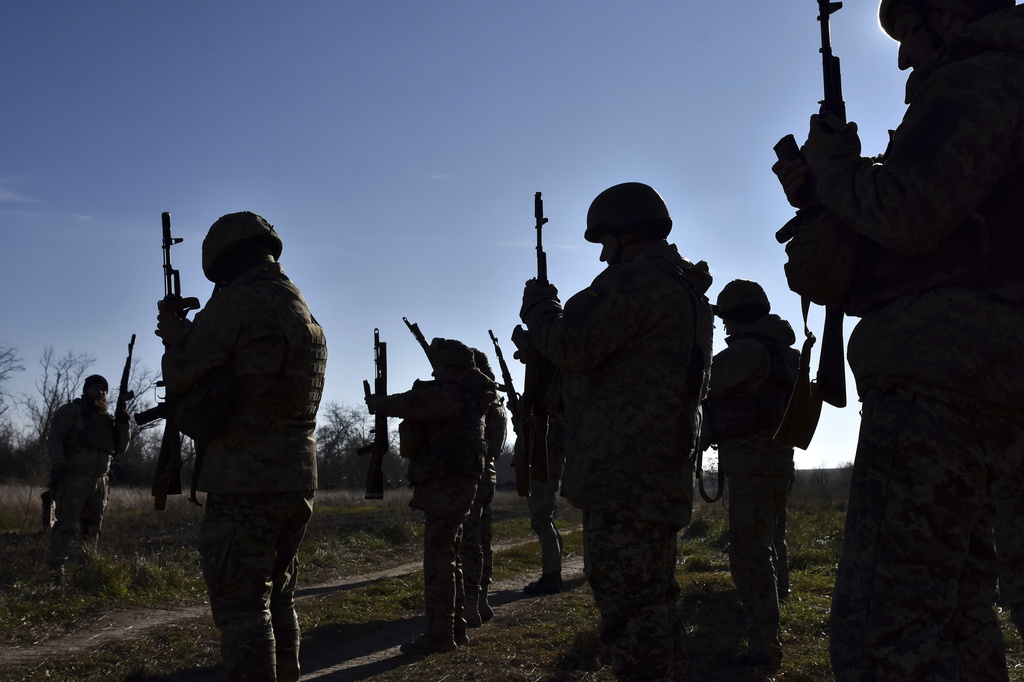Biden Administration Sends $275 Million in Weapons to Ukraine \ Newslooks \ Washington DC \ Mary Sidiqi \ Evening Edition \ The Biden administration has announced a $275 million weapons package for Ukraine, rushing to deliver advanced arms before President-elect Donald Trump takes office. The aid includes air defense systems, artillery, and long-range munitions. Meanwhile, Ukraine’s recent use of U.S.-supplied ATACMS missiles against Russian targets has intensified tensions, with Moscow citing its revised nuclear doctrine to justify potential escalation.
Biden Pushes Ukraine Aid Ahead of Trump’s Inauguration: Quick Looks
- New aid package: $275 million includes HIMARS systems, artillery, and Javelin missiles.
- ATACMS strikes in Russia: Ukraine uses long-range U.S. missiles to hit Russian depots, raising alarms.
- Nuclear tensions: Russia invokes its revised doctrine, warning of possible nuclear retaliation.
- Funding scramble: Biden administration aims to deliver $7.1 billion in weapons before January 20.
- Trump’s ambiguous stance: The president-elect pledges to end the war quickly but offers few specifics.
Deep Look
What’s in the New Weapons Package?
The latest U.S. aid package for Ukraine includes a diverse array of military equipment, highlighting the Biden administration’s focus on strengthening Ukraine’s air defense and artillery capabilities:
- HIMARS (High Mobility Artillery Rocket Systems): Known for their precision and range, these systems have been crucial in Ukraine’s counteroffensive.
- Artillery rounds: Includes 155mm and 105mm munitions to sustain ground operations.
- Javelin anti-tank systems: Portable weapons used to destroy armored vehicles and fortifications.
- Air defense equipment: Aimed at countering Russian missile and drone attacks.
- Spare parts and equipment: To ensure the continued operation of critical systems.
ATACMS Strikes Deep in Russia
Ukraine’s recent use of U.S.-supplied Army Tactical Missile Systems (ATACMS) has drawn significant attention. On Tuesday, Ukrainian forces launched eight ATACMS missiles, striking ammunition depots in Karachev, in Russia’s Bryansk region. According to U.S. officials, only two missiles were intercepted, showcasing the effectiveness of the weapon.
Moscow has reacted sharply to the strikes, with Kremlin spokesman Dmitry Peskov warning that such actions could meet the conditions for a nuclear response under Russia’s revised doctrine. The doctrine allows nuclear retaliation for conventional attacks that pose critical threats to Russia’s sovereignty or territorial integrity.
Biden’s Rush to Deliver Aid
The Biden administration is operating on a tight timeline to allocate and deliver all congressionally approved aid for Ukraine before Trump’s inauguration on January 20. The Pentagon must move $7.1 billion in unspent funds, including:
- $4.3 billion: From a foreign aid bill passed earlier this year.
- $2.8 billion: Leftover funds due to recalculated costs of prior arms deliveries.
Officials have emphasized the importance of completing these transfers before Trump’s inauguration to ensure Ukraine’s military and economic resilience.
Trump’s Position on Ukraine
President-elect Donald Trump has signaled a starkly different approach to the war in Ukraine, criticizing U.S. aid and describing Ukrainian President Volodymyr Zelenskyy as a “salesman.” Trump has pledged to end the conflict quickly but has offered few details on how he plans to achieve this.
Trump’s ambiguous stance has raised concerns among NATO allies and Kyiv, with critics fearing that his policies could pressure Ukraine into accepting unfavorable terms or embolden Moscow.
Rising Tensions Amid Nuclear Warnings
- Russia’s nuclear doctrine revision: Signed by Putin last week, the updated policy lowers the threshold for nuclear use, citing conventional attacks by nuclear-backed nations as a trigger.
- Western weapons in Ukraine: Advanced systems like ATACMS and HIMARS have bolstered Ukraine’s capabilities but also risk escalating the conflict.
- Economic stakes: The $50 billion loan to Ukraine underscores the financial dimension of the war, with frozen Russian assets serving as collateral.
Experts warn that these dynamics could lead to a dangerous spiral of escalation, particularly if miscalculations occur.
A Race Against Time
At the same time, the transition to a Trump administration introduces significant uncertainty. Trump’s skepticism of U.S. involvement in Ukraine and his praise for Russian President Vladimir Putin suggest a potential shift in U.S. foreign policy.
What Lies Ahead?
The stakes are higher than ever, with the potential for escalation on multiple fronts—military, economic, and diplomatic. Ensuring stability will require careful navigation of these challenges and a commitment to supporting Ukraine in its fight for sovereignty.
Biden Administration Sends Biden Administration Sends







